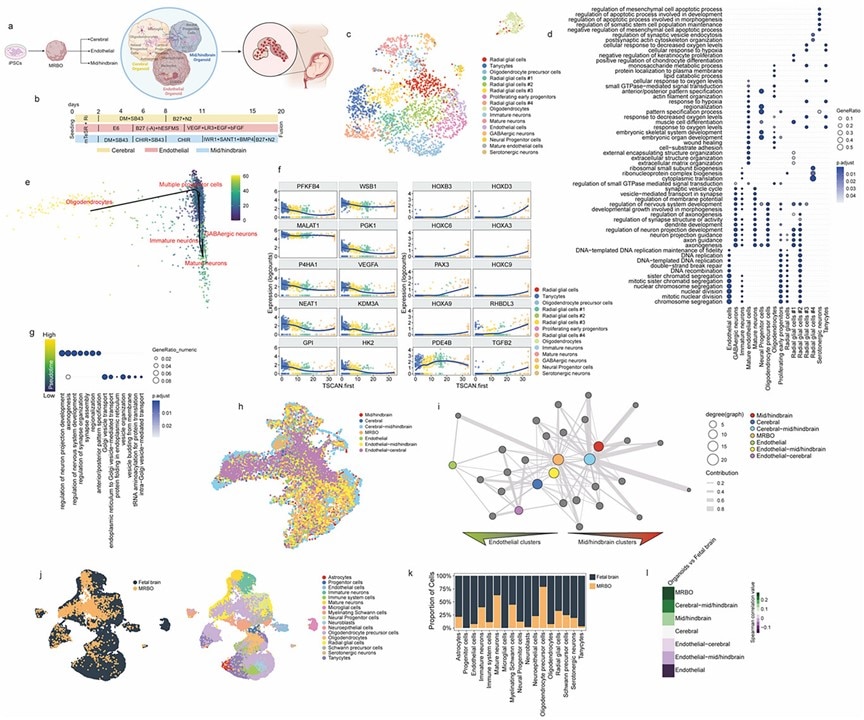
Development of Multi-Region Brain Organoids using integrated single-nucleus analysis. (Image Credit: AdvancedScience)
How many neurons create awareness?
Researchers at Johns Hopkins University (JHU) created mini brains called brain organoids composed of the human brain's neurons and cells. They also function similarly to a human brain. The goal was to help them understand the cause of certain neurological conditions like autism and schizophrenia.
JHU also produced brain assembloids—brain organoids that have been fused. These structures consist of organoids with different brain segments, including the hindbrain, cortex, and midbrain. However, previous models had some limitations that constrained their ability to gain insight into how the brain develops during pregnancy.
The team then created Multi-Region Brain Organoids (MRBOs)—mini brains that precisely replicate the functionality and development of the fetal brain—to overcome those drawbacks. MRBOs are developed by merging brain organoids that represent the cerebrum, midbrain, and hindbrain with endothelial organoids that serve as blood vessel structures. Distinct organoids in these MRBOs retained their identity, replicating the developing human brain.
By incorporating those three regions, scientists can study the brain's complex functions and observe how genetics, environmental factors, and therapy affect neurodevelopment.
Scientists often had to use brain assembloids without blood vessels spanning multiple regions. Studies incorporated blood vessel cells in the cortex region, which meant blood vessel-like structures remained in that area. Additionally, researchers used isolated blood vessel cells from human umbilical veins called human umbilical vein endothelial cells (HUVECs). There was still a limitation: HUVECs aren’t an accurate representation of brain-based endothelial cells, made up of special cell types. From there, the team produced a more accurate and brain-like model of blood vessels.
At this point, the researchers introduced endothelial organoids, a lab-grown, 3D model replicating blood vessels. They feature a variety of cells, such as vascular progenitors, mature endothelial pericytes, proliferating angiogenic cells, and stromal cells. When using bioreactors and microfluidic systems, endothelial cells characterized by the CD31 protein can develop with cerebral organoids.
Biomechanical tools preserve minimal shear stress, enabling the fluid to move gently and with low pressure, mirroring natural blood flow. With this environment, organoids can grow endothelial cells. The system demonstrates how biomechanics work in vascular differentiation. However, it’s only effective in a single area of the brain.
Mini brains may provide a better understanding of how neurological conditions develop, including autism spectrum disorder, schizophrenia, and bipolar disorder. This could lead to early diagnosis, improved treatment, and more effective preventative strategies.
Have a story tip? Message me at: http://twitter.com/Cabe_Atwell
